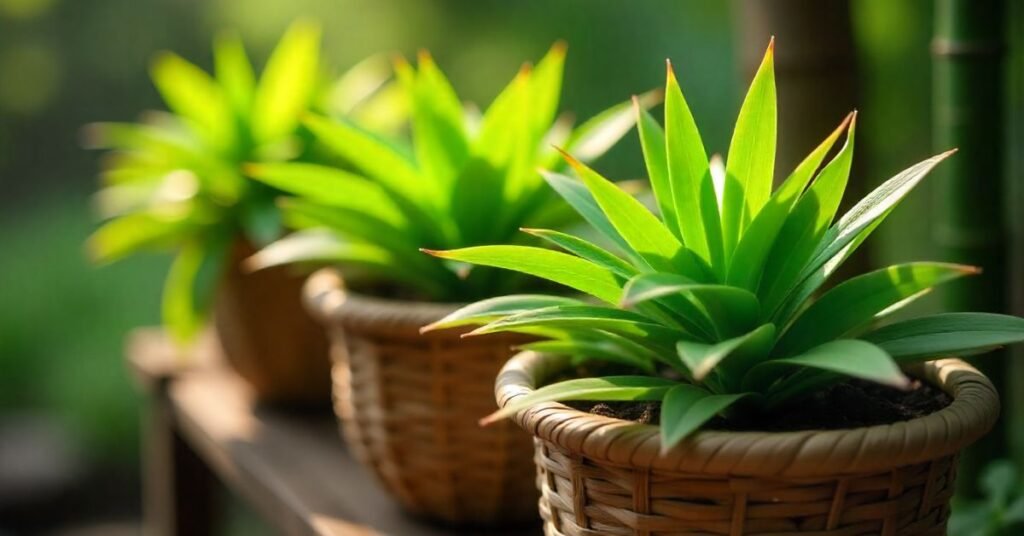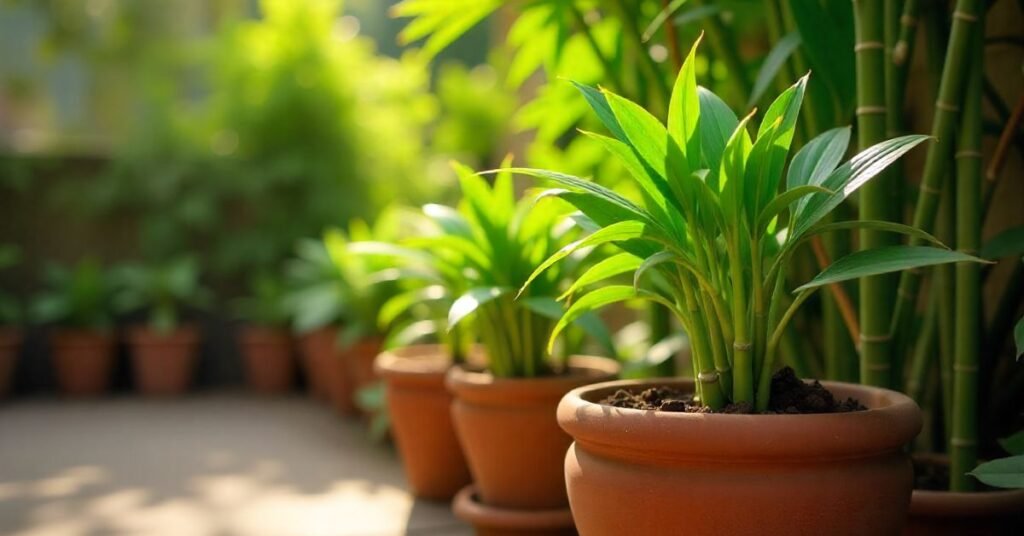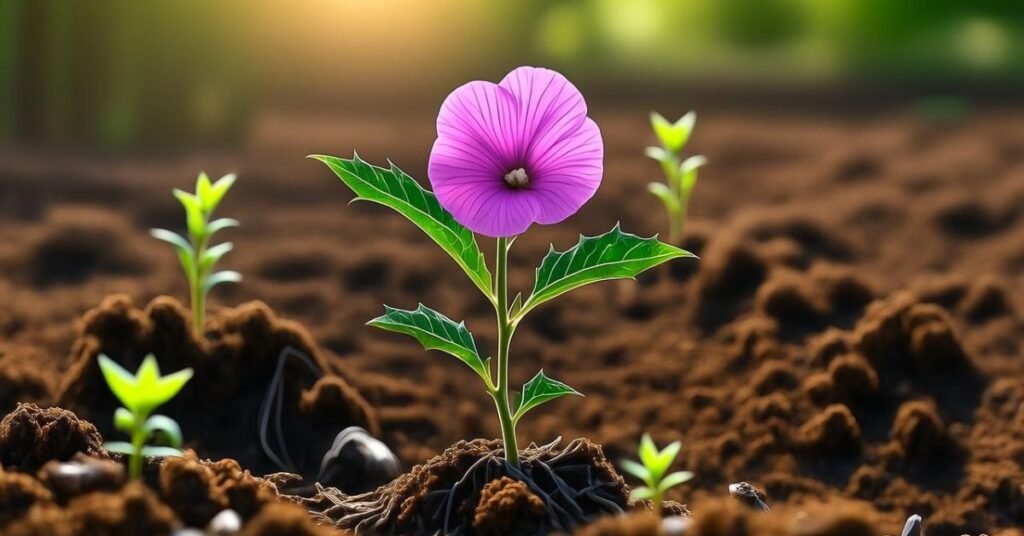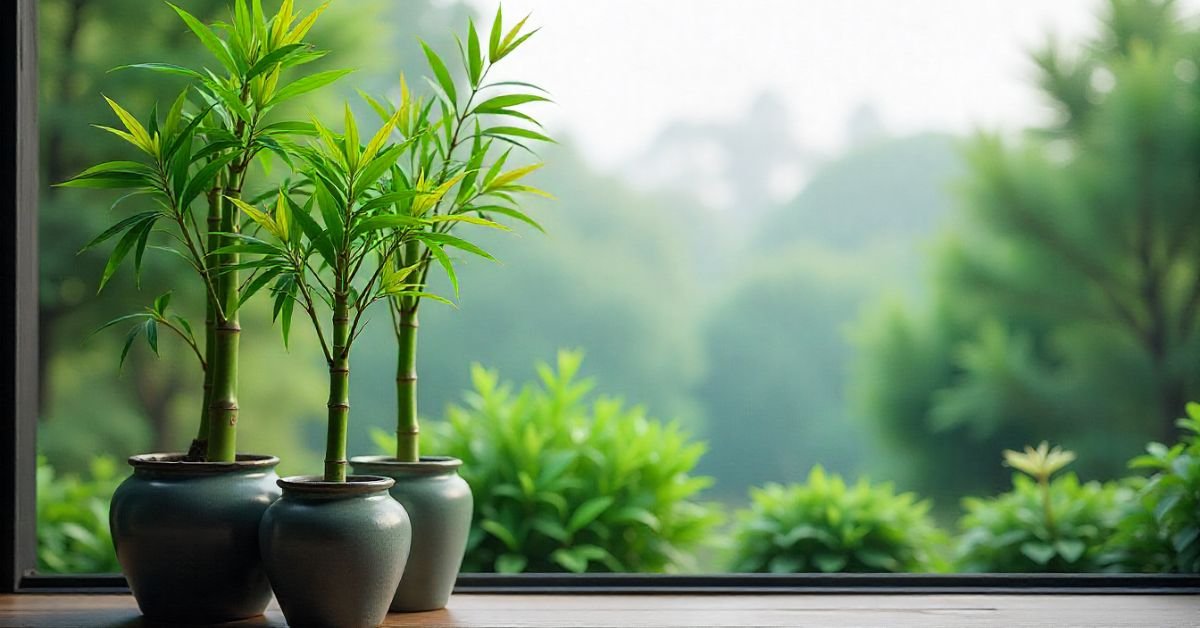Introduction
Bamboo plants in pots are a great way to add greenery to your home or garden. They are tall, elegant, and easy to grow. These plants can thrive both indoors and outdoors when given the right care. Bamboo in pots grows well because it doesn’t need much space. It’s perfect for balconies, patios, or small gardens.
Growing bamboo in pots is simple and rewarding. It adds a natural touch to any space and makes your home feel calm and fresh. People love bamboo because it grows fast and looks beautiful in every corner. If you want a plant that’s stylish and low-maintenance, bamboo in pots is the best choice.
To grow bamboo successfully, choose a large pot with good drainage. Use rich soil and water the plant regularly. Place it where it gets enough sunlight but stays protected from harsh weather. With the right care, your bamboo plants will stay healthy, tall, and green all year long.
Container Type
Choose a strong and spacious container for your bamboo plant. It should have drainage holes to prevent waterlogging. Plastic, ceramic, or wooden pots all work well. Make sure the container is wide enough for the roots to spread. A deep pot helps the bamboo grow tall and stay stable. Always check that the pot allows air to circulate around the roots.
Soil
Bamboo plants love rich and well-drained soil. Use a mix of garden soil, compost, and sand for the best results. The soil should hold moisture but not stay soggy. Adding organic matter keeps the bamboo healthy and green. Good soil helps the roots grow strong and supports faster growth.
Watering
Bamboo plants in pots need regular watering to stay healthy. Keep the soil moist but not too wet. Water the plant when the top layer of soil feels dry.

During hot days, you may need to water more often. Make sure extra water can drain out to avoid root rot. Consistent watering helps bamboo grow tall and green.
Sun
Bamboo plants love sunlight but not extreme heat. Place your pot where the plant can get bright, indirect sunlight. A few hours of morning or evening sun is perfect. Avoid placing it in the strong afternoon sun, as it can dry the leaves. If you’re growing bamboo indoors, keep it near a sunny window for steady growth.
Fertilizing
Bamboo plants grow fast, so they need nutrients to stay strong. Use a balanced liquid fertilizer once a month during the growing season. This helps the leaves stay fresh and green. Organic compost or slow-release fertilizer also works well.
In winter, reduce feeding because bamboo grows slower in cold weather. Over-fertilizing can harm the plant, so always use the right amount. Regular feeding gives bamboo the energy it needs to produce new shoots and healthy leaves.
How to Care for Bamboo
- Water the plant regularly to keep the soil moist.
- Place the pot in bright, indirect sunlight.
- Use well-drained, rich soil for healthy growth.
- Trim old or yellow leaves to keep it neat.
- Add fertilizer once a month during growth season.
- Avoid overwatering to prevent root rot.
- Report the bamboo when roots outgrow the container.
- Keep the plant safe from strong winds and extreme heat.
- Wipe the leaves to remove dust and keep them shiny.
- Watch for pests and treat them early if found.
How to Propagate Bamboo
Propagating bamboo is simple and fun. The best way is by dividing the roots or using cuttings. Choose a healthy bamboo plant with strong stems. Cut a section with at least two nodes and some roots. Plant it in a pot with moist, rich soil. Keep it in a warm place with light shade until new shoots appear.

Water the new plant regularly to help it grow strong. Avoid placing it in direct sunlight at first. Once it starts growing, move it to a brighter spot. With patience and care, your bamboo cutting will grow into a beautiful new plant.
Growing Bamboo: Problem Solving
| Problem | Cause | Solution |
| Yellow leaves | Too much water or poor drainage | Water less and improve drainage |
| Slow growth | Lack of sunlight or nutrients | Move to brighter spot and add fertilizer |
| Brown leaf tips | Dry air or low humidity | Mist leaves and keep soil moist |
| Pests on leaves | Aphids or spider mites | Use mild soap spray or neem oil |
| Root rot | Overwatering | Let soil dry and repot in fresh soil |
| Weak stems | Small pot or poor soil | Use larger pot with rich soil |
| Leaves curling | Too much heat or sun | Move to shaded area |
| Faded color | Lack of nutrients | Add organic compost or liquid feed |
Types of Bamboo Plant
There are many types of bamboo plants, each with unique features. Some grow tall and strong, while others stay small and compact. Bamboo plants can be used for decoration, privacy, or indoor beauty.
1. Lucky Bamboo: Grows well indoors and brings good luck.
2. Golden Bamboo: Has yellow-green stems and grows fast.
3. Dwarf Bamboo: Small and perfect for pots or borders.
4. Black Bamboo: Known for its dark-colored stems and elegant look.
5. Fishpole Bamboo: Tall and strong, great for outdoor gardens.
Conclusion
Growing bamboo plants in pots is simple and rewarding. They add beauty and calmness to any space. With the right care, sunlight, and water, bamboo stays healthy and green all year. Whether indoors or outdoors, it brings a fresh and natural touch. Bamboo is a symbol of strength and growth, making it a perfect plant for every home.
FAQs
1. Can bamboo plants grow well in pots?
Yes, bamboo plants grow well in pots if they have enough space, sunlight, and proper drainage.
2. How often should I water my bamboo plant in a pot?
Water it when the top layer of soil feels dry to keep the roots moist but not soggy.
3. Which soil is best for bamboo plants in pots?
Use well-drained, rich soil mixed with compost and sand for healthy growth.
4. Can bamboo plants stay indoors?
Yes, many bamboo types grow beautifully indoors with bright, indirect sunlight.
5. How fast do bamboo plants grow in pots?
Bamboo can grow quickly, showing new shoots within weeks if cared for properly.


